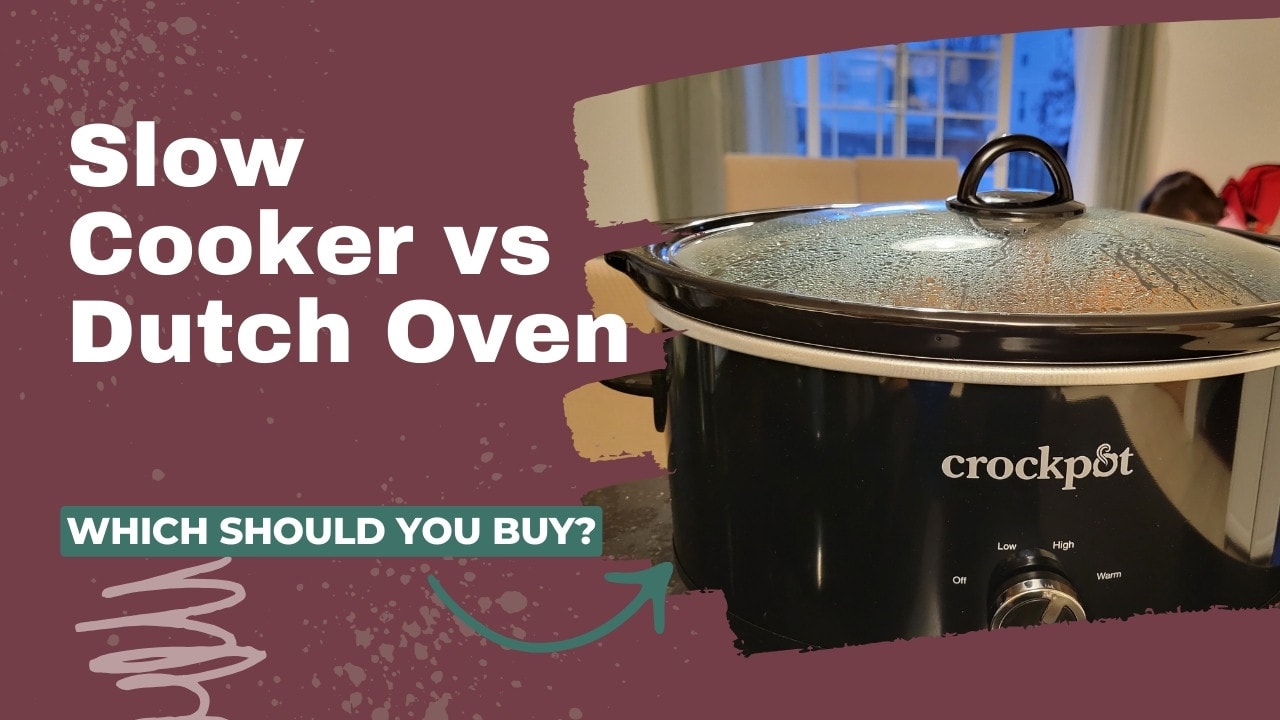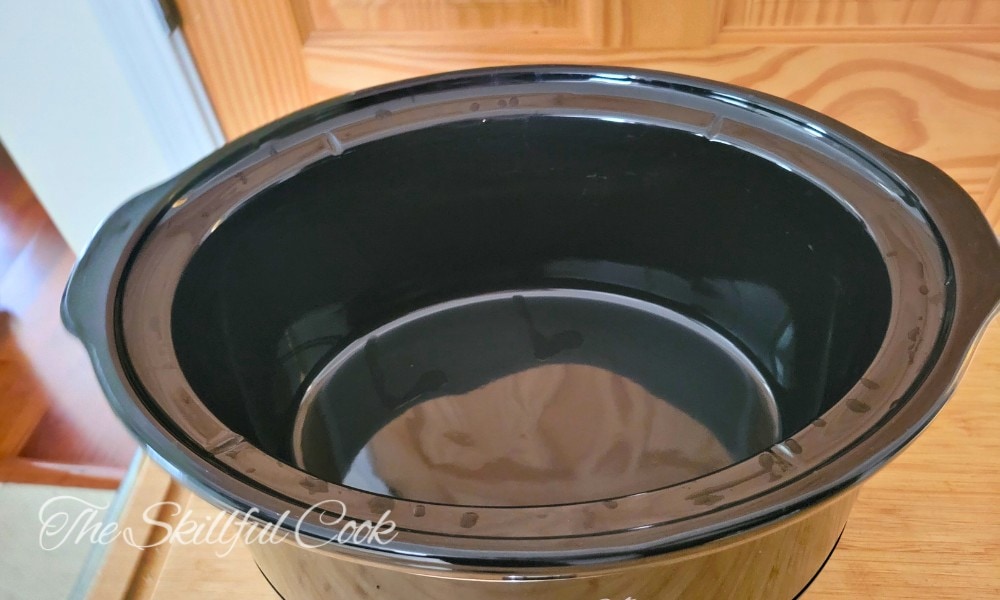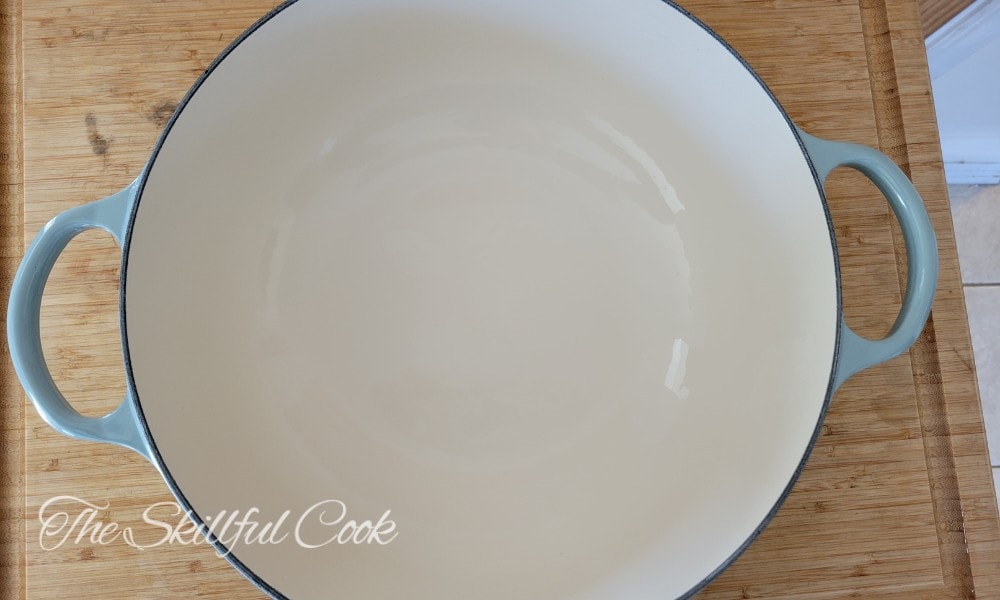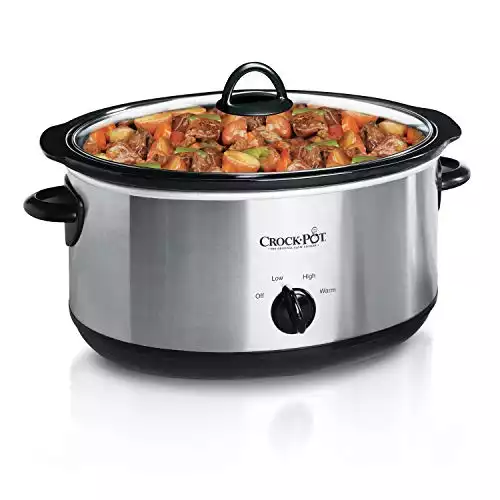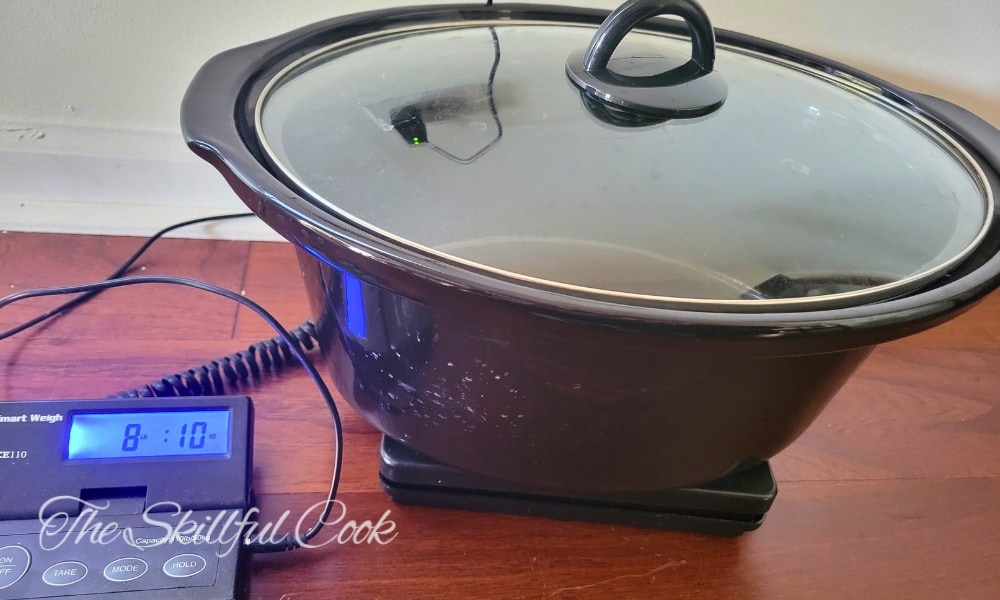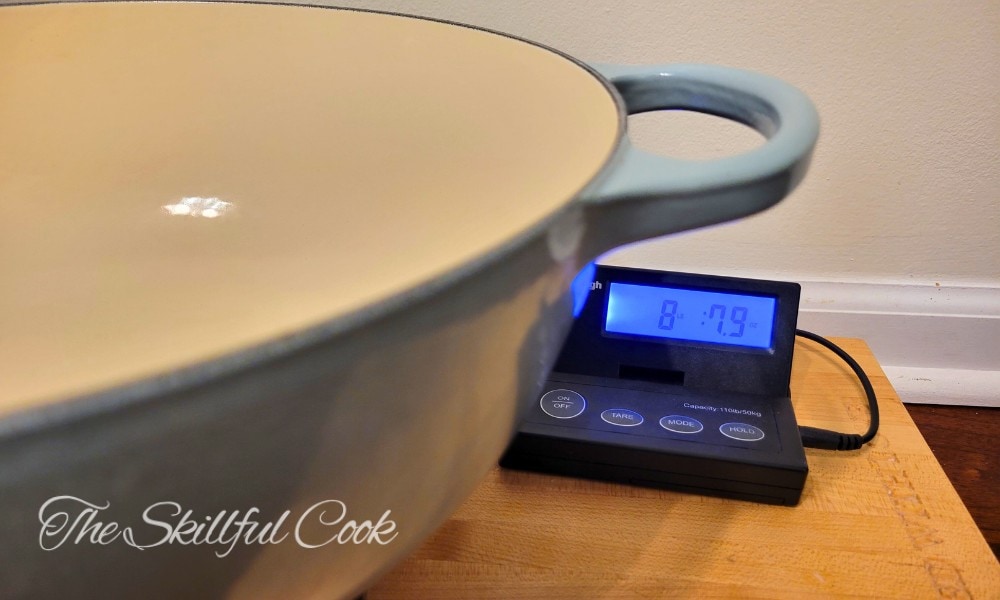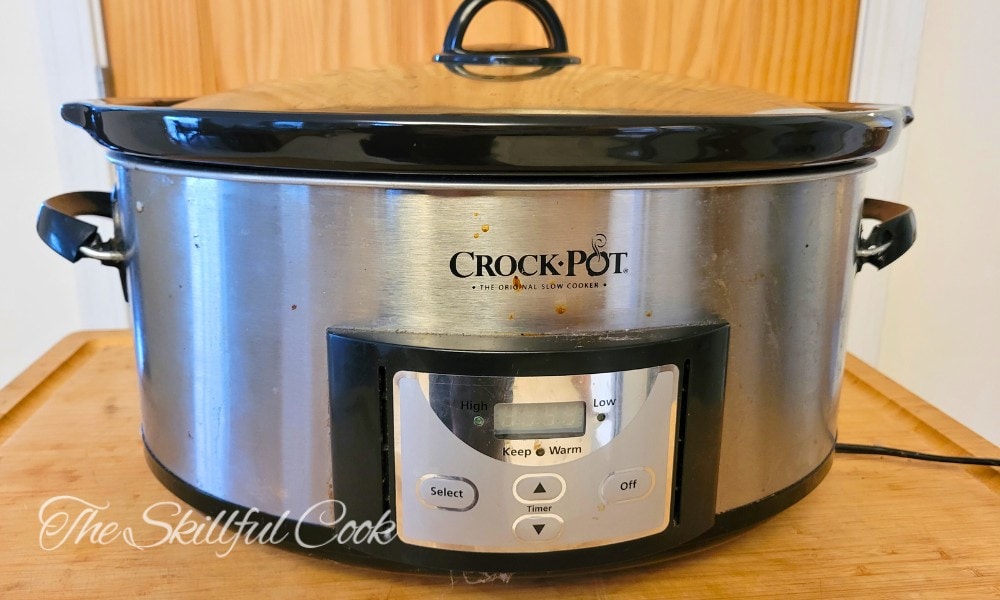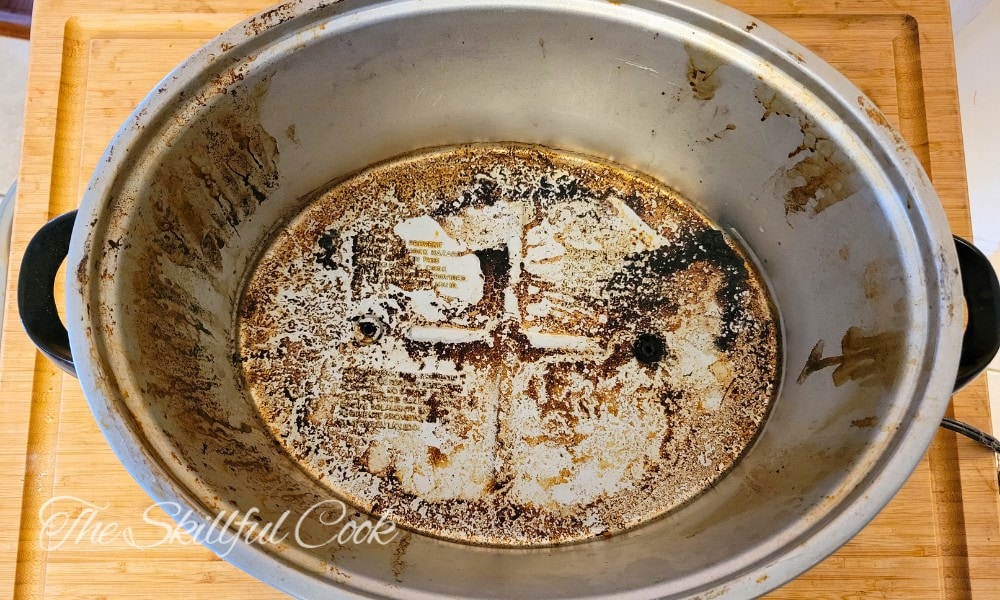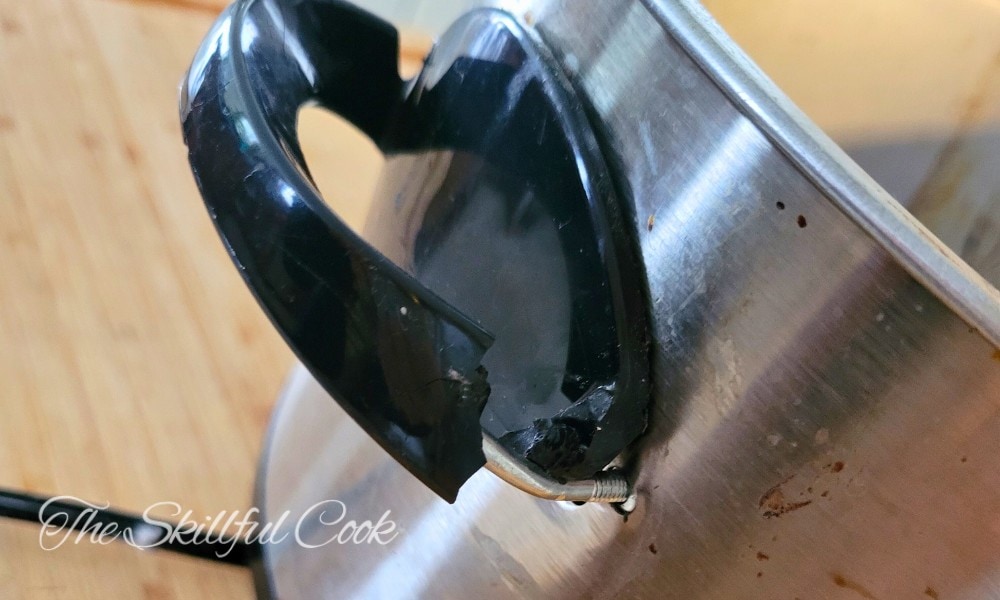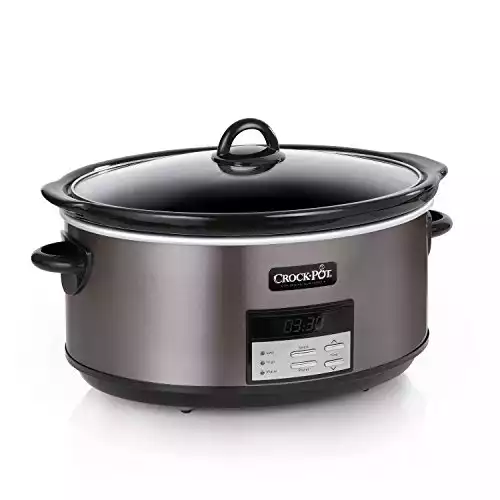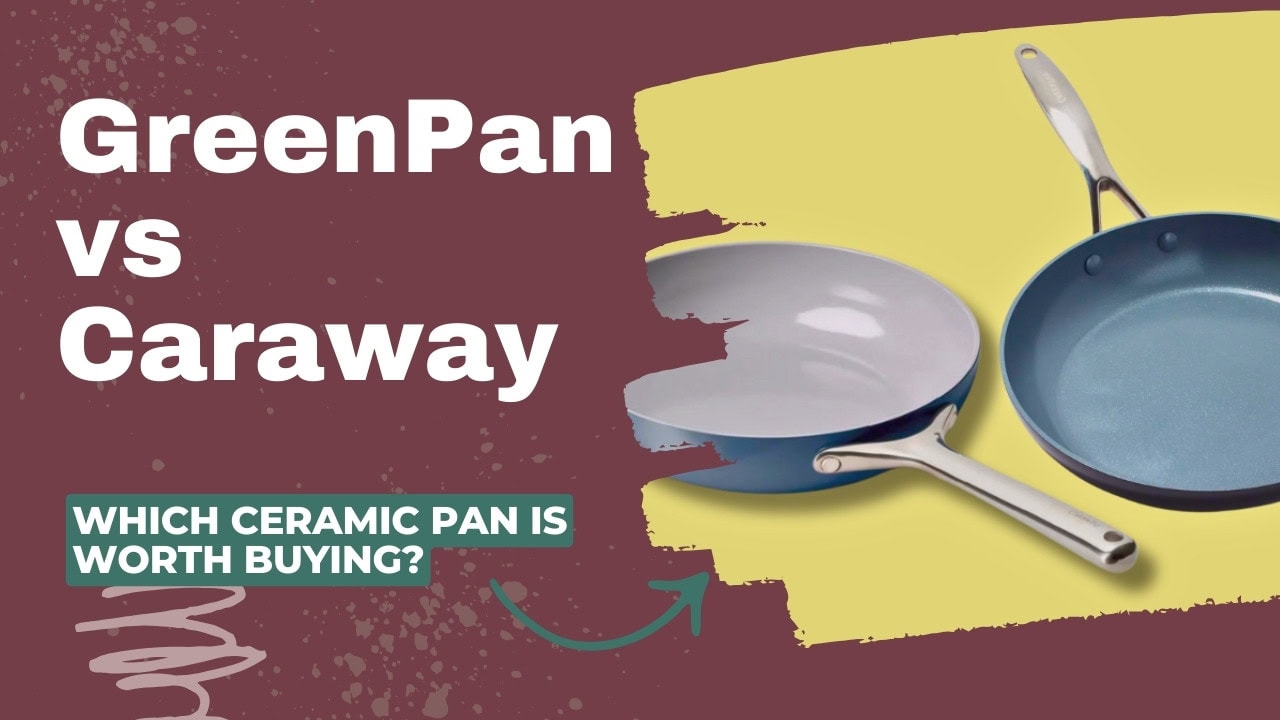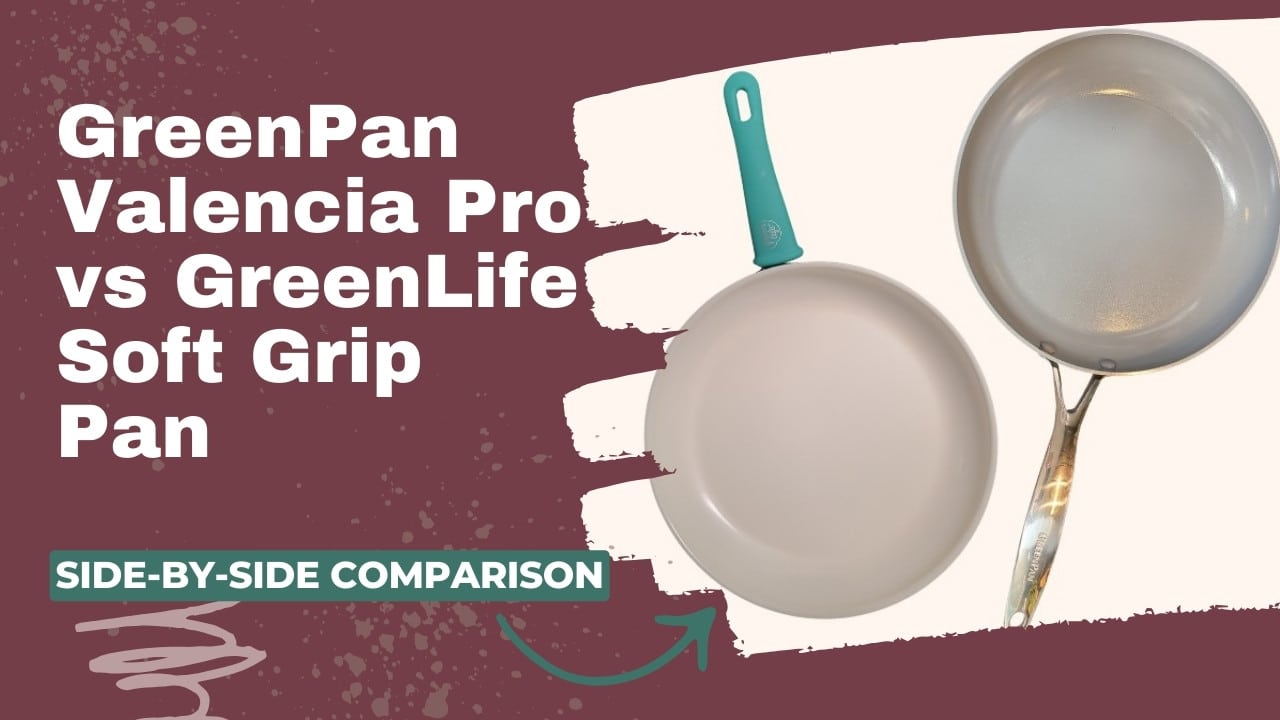In my nine years of homemaking, I had never made a pot roast the way my mom did. With simple seasonings, carrots, and potatoes, in the Crock Pot. The kind that cooked all morning and was pull-apart tender for Sunday dinner.
My go-to cooking method for roasts has always been using a Dutch oven in the oven. I own a slow cooker, but I always used it for warming up food for potlucks – rarely for cooking a meal.
Was I missing out? Was I wasting a lot of energy when a slow cooker is more efficient? I decided to put a Dutch oven and a Crock Pot to a head-to-head test. I’ll share the results of my test in this article, and I’ll walk you through what you need to know to choose one type of cookware over the other.
What’s the Difference Between a Dutch Oven and a Slow Cooker?
A slow cooker is a cooking appliance with a heavy pot insert that sits over an electric heating element. A Dutch oven is a large pot, usually made of cast iron, with a heavy lid. It doesn’t have its own heat source, but can be used on the stove or in the oven. Both are popular for simmering and one-pot meals.
Here are some key differences between a slow cooker and a Dutch oven.
1. Material
Slow cookers typically have a ceramic (glazed earthenware) vessel that holds the food and helps keep it warm. But they can have stainless steel inserts.
Dutch ovens are traditionally made of cast iron. The iron may be seasoned or coated in porcelain enamel. An enameled Dutch oven is sometimes called a Cocotte or a French oven. You can find a few aluminum or steel Dutch ovens, sometimes even with a nonstick coating, but these don’t cook the same way as traditional heavy pots.
2. Brands
The most famous brand of slow cooker is the Crock Pot, and the most famous brand of Dutch oven is the beautiful enameled Le Creuset. But you can find many different brands of both Dutch ovens and slow cookers.
3. Price
Slow cookers are typically less expensive than Dutch ovens. I got the 7 quart Crock Pot I tested in this article for $30 at my local Walmart. The 7.5 quart Le Creuset Dutch oven I tested for this article costs over ten times more than the slow cooker! (Yes, it was well over $300.)
Granted, Le Creuset is the priciest brand of Dutch oven. You can get much more affordable alternatives, like Lodge. Still, even a basic large enameled Dutch oven will cost significantly more than a basic slow cooker.
Slow cookers go up in price when they have programmable “smart” features or are combined with multi-cookers. Multi-cookers, such as the Instant Pot, have slow-cooking functions. But I’ve found that these multi-cookers don’t work as well for slow cooking as a traditional Crock Pot because of their more vertical shapes.
This 7-quart slow cooker is perfect for feeding a crowd! Choose high heat for quick meals or low heat to cook all day while you're out. The handy "warm" setting keeps food ready to serve, and the removable stoneware and lid are dishwasher safe for easy cleanup.
4. Purposes
You can make a lot of the same recipes in a slow cooker that you can in a Dutch oven. Stews, soups, beans, chili, even warm drinks like cider– anything that needs slow braising or simmering works well in both pots.
But a Dutch oven is overall more versatile. It can go on the stovetop, so you can use it to make a mirepoix or sear meat as a soup base. It can go in the oven, and its heavy walls regulate temperatures in a way that’s great for baking bread or delicate desserts.
The slow cooker is a better option if you need to keep food warm for an indefinite amount of time, like if you are taking a dish to an event and need a pot with its own heat source. It’s also better for hands-off slow cooking, like if you want dinner to cook overnight or while you’re at the office all day.
5. Care and Maintenance
Dutch ovens (if they’re coated in enamel) and slow cookers can both go in the dishwasher – but I’d recommend hand washing both of them to avoid them knocking against other items in the dishwasher and cracking or chipping.
Hand washing the crock pot insert is very much like washing a Dutch oven. You can soak both of them to loosen stuck food. You should use warm and soapy water and a soft sponge, but avoid abrasive scrubbers on both of them.
My 7-quart crock pot insert weighs 8 pounds, 10 ounces. My 7.5-quart Le Creuset Dutch oven weighs 8 pounds, 8 ounces without a lid – so almost identical weight. They both feel heavy to wash in the sink, but the Le Creuset is a bit easier to maneuver because of the looped handles.
If your Dutch oven is made of plain cast iron, not enameled, it will need extra maintenance.
6. Longevity
I know there are some really old Crock Pots in grandmothers’ houses that are still cooking away. But in general, it’s safe to say that a Dutch oven has a longer lifespan.
Dutch ovens are made of more durable materials. Iron Dutch ovens, whether enameled or not, can last for decades if handled carefully.
The metal parts of a Crock Pot get stained. The heating elements wear out. The ceramic crock is more prone to cracking, chipping, or breaking. And, just the other day, I reached for my friend’s old Crock Pot, and the plastic exterior handles crumbled and fell off. (What!? Yeah I was surprised, too.)
But Back to My Sunday Roast…
My mom didn’t have a Dutch oven when I was a kid, and she always made pot roast in the slow cooker. I wanted to test her old way vs. the even older way of cooking a pot roast in a Dutch oven and see which cooked up more nostalgia (and better flavor!)
I used a recipe for a slow cooker roast with simple ingredients – a 3-pound chuck roast, carrots, onions, garlic, rutabaga, tomato paste, bay leaves, rosemary, and some beef stock. I cubed the veggies. I didn’t cut up the meat at all, since I wanted to see how long it would take each pot to tenderize the entire roast.
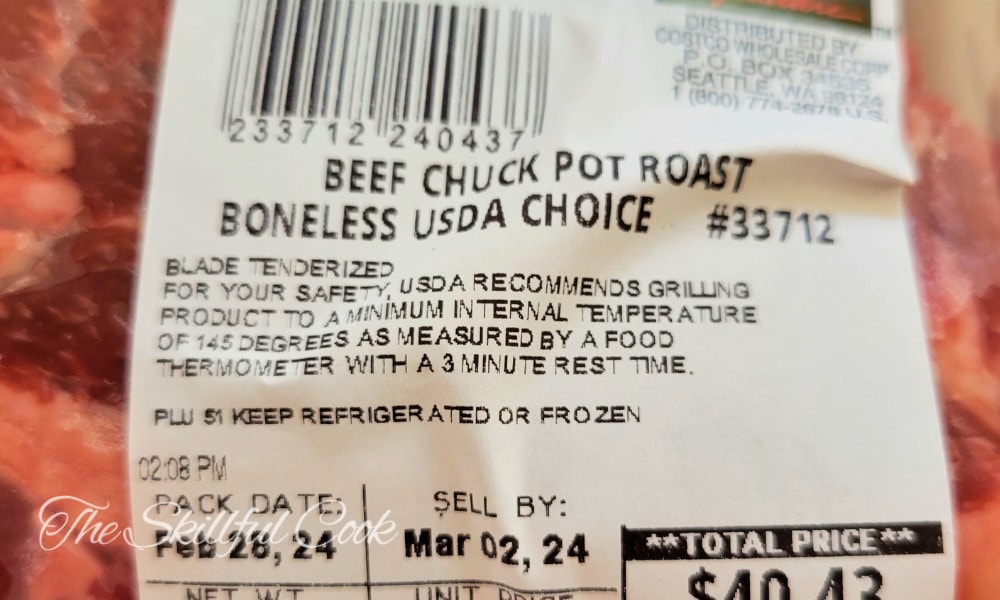
I used the exact same ingredients for the Dutch oven, at the same quantities, since I was testing a 7qt Crock Pot against a 7.5 quart Le Creuset Chef’s oven.
I popped all the ingredients into the two pots. I turned the Crock Pot to “high.” I placed the Dutch oven in my oven and set the temperature to 300°F.
Checking the Temperature
At one hour: I set a timer for an hour and checked the temperature in both the pots. The liquid in the Crock Pot was at 126°F and the liquid in the Dutch oven was 165°F at one hour. The Dutch oven was heating up faster. This isn’t surprising, seeing as Crock Pot’s website claims that it takes four hours to reach 205F.
At four hours: When both pots had been cooking for four hours, the liquid c had just started to bubble and measured 212°F. The meat measured 205°F. The carrots and rutabaga were cooked soft, but the meat wasn’t ready. I could poke it with a fork, but it wasn’t pull-apart tender by any means. Since the liquid was bubbling, I turned the heat setting to low.
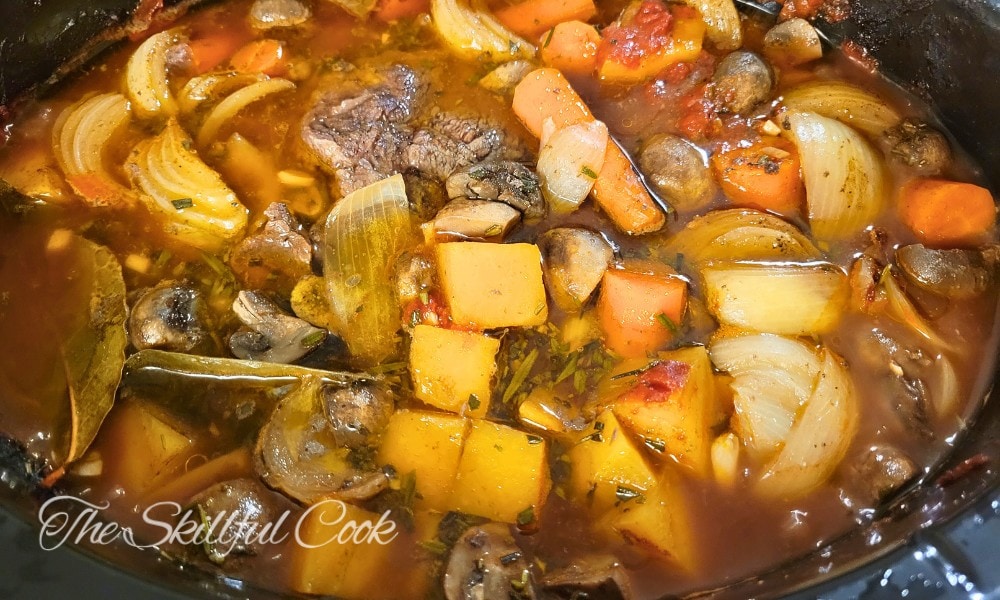
The liquid in the Dutch oven was 210°F and the meat was about the same temperature. The meat was much more tender and the veggies were cooked soft, but not overdone.
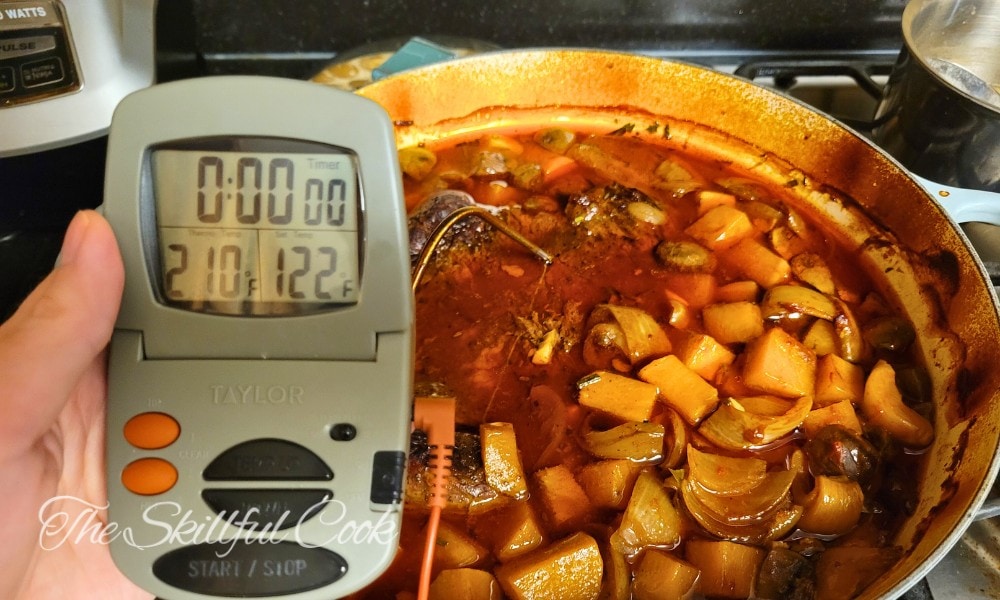
Finishing it off: I let the Dutch oven cook for another half hour, and the roast was done to desired tenderness. The Crock Pot took another four hours. Total cook time to reach a shreddable, soft roast was 8 hours in the Crock Pot and 4.5 hours in the Dutch oven.
Dutch Oven vs Crock Pot – Which Cooks Better?
A Dutch oven cooks food faster than a Crock Pot; that’s undisputed. And that sounds silly to say since a Crock Pot is quite literally called a slow cooker. But since I’m often prepping dinner later in the day than I hoped, faster cooking is a win in my book.
Which end result tasted better? My family and I both preferred the texture and flavor of the roast in the Dutch oven. There’s something about the way the heavy lid traps heat and drives steam back into the meat that tenderizes it without drying it at all. Perhaps because the meat released less water (or because the liquid reduced more?), the broth was thicker and more flavorful as well.
Advantages of Slow Cookers
Crock Pots are wonderful for hands-off cooking. If you want to dump ingredients in at night and not worry about it until morning, a slow cooker is your choice. These pots can cook steel-cut oats overnight for breakfast or have meatballs and sauce ready for dinner when you’ve been gone all day.
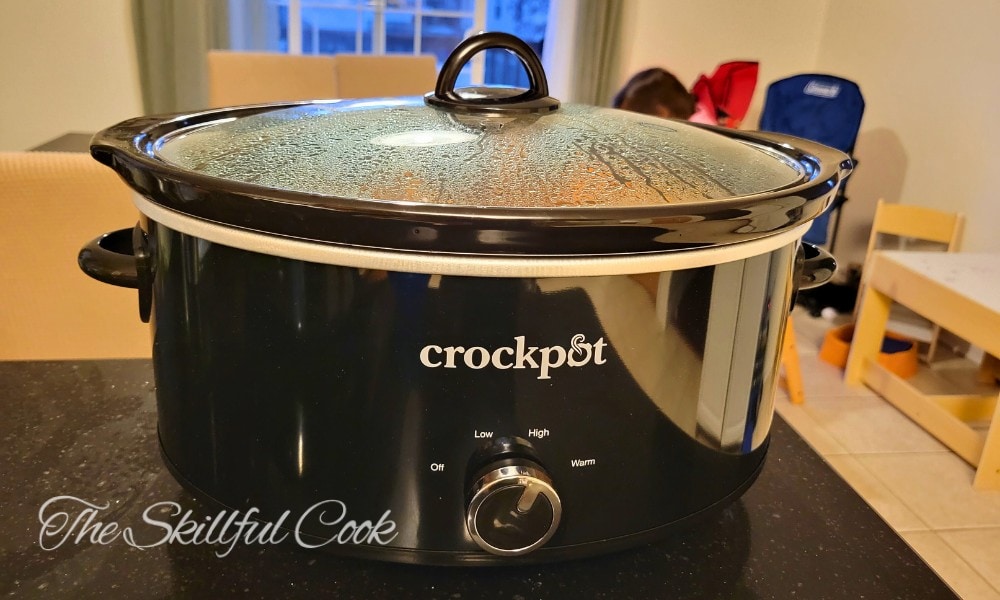
Slow cookers are better for recipes that require consistent low heat, never rising above 210 degrees. This includes foods like yogurt or broth that you don’t want to boil. However, you can’t control the exact temperature of basic slow cookers, since they only have “high” and “low” settings.
Slow cookers are invaluable if you attend a lot of potlucks, group events, or church dinners where you need to keep food warm for hours and don’t have a stove or oven available. A basic slow cooker is also a lot more affordable than a nice Dutch oven and is more energy efficient.
Advantages of Dutch Ovens
Dutch ovens, though, are hard to replace in the kitchen. They are extremely versatile, able to handle baking, slow cooking, braising, sauteing – pretty much anything except high-heat stovetop use. When used in the oven, Dutch ovens cook food faster than a slow cooker but retain excellent moisture and yield delicious results.
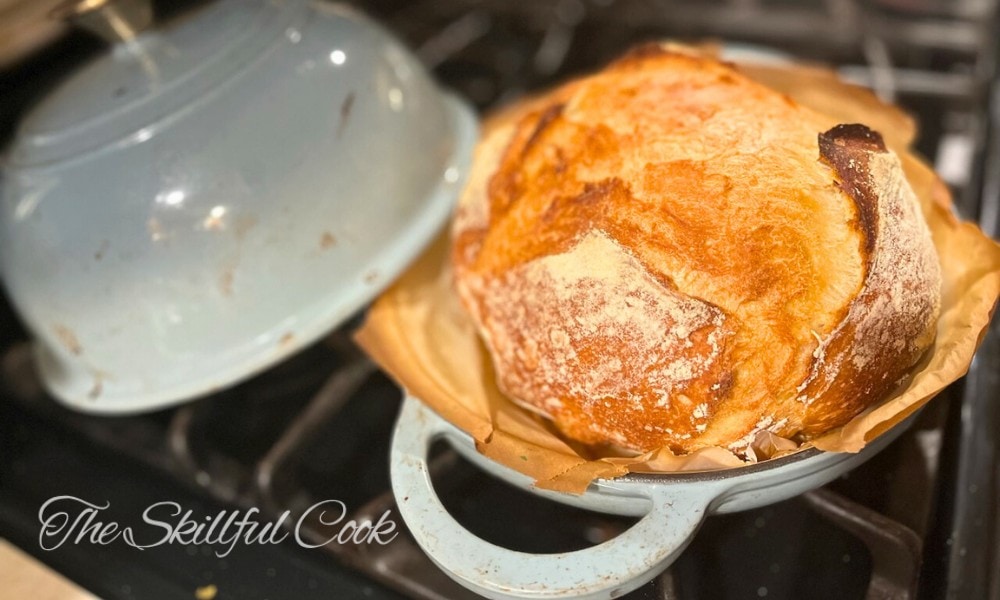
Cast iron Dutch ovens have wonderful heat retention and will keep food warm for a long time, but they don’t self-regulate like a slow cooker. They’ll need to be placed in the oven or on the stove and babysat a bit to maintain a steady temperature. They are very heavy and harder to transport to events than a Crock Pot.
Converting a Slow Cooker Recipe to a Dutch Oven
Almost every recipe written for a slow cooker can be converted to a Dutch oven! The only significant change you need to make is to reduce your cooking time – and often temperature.
Recipes take between half and 1/3 of the time to cook in a Dutch oven as they do in a slow cooker. The exact amount of time varies depending on the ingredients, the size of your Dutch oven, and the oven or stove temperature.
For recipes that call for a slow cooker setting on “high,” you can set your oven temperature to 275°F to 325°F with the Dutch oven inside. For recipes that call for a slow cooker setting on “low,” reduce your oven temperature to around 250°F.
Remember, the higher your oven temperature, the more quickly food will overcook, and the more carefully you will need to watch it.
Use the table below to estimate cooking time in a Dutch oven when using a recipe for a slow cooker.
| Recommended Slow Cooker Time | Time in Dutch Oven |
|---|---|
| 12 hours | 4-5 hours |
| 8 hours | 3-4 hours |
| 6 hours | 2-3 hours |
| 4 hours | 1.5 – 2 hours |
| 2 hours | 30 minutes |
Converting a Dutch Oven Recipe to a Slow Cooker
Converting a recipe designed for Dutch ovens to a Crock Pot or slow cooker can usually be done, but is a bit more complicated.
If your recipe calls for searing meat or browning onions in the Dutch oven, you’ll need to use a different skillet for that step. You can’t saute or brown food in a slow cooker. (Unless it’s an Instant Pot with a “saute” setting.)
Soups, stews, chilis, and other liquid-based recipes for a Dutch oven will convert easily to a slow cooker. You will simply need to double the cooking time.
If the recipe includes legumes, meat or other foods that take a long time to cook, you may need to even triple the recommended cooking time.
You don’t usually have to adjust the amount of liquid in a slow cooker recipe for a Dutch oven, or vice versa, since both pots have lids that prevent moisture evaporation. However, if you’re converting a recipe for a stock pot or saucepan to a Dutch oven or slow cooker, you will have to adjust the amount of liquid – usually by reducing it.
Frequently Asked Questions
Can you Bake Bread in a Slow Cooker?
Yes, actually! You can bake bread in a slow cooker. You can either use the pot-in-pot method (where you place a loaf pan into the crock pot with a bit of water in it) or you can line the crock with parchment paper and let it bake bread directly. You can even let the bread rise in the slow cooker, saving a step. The trickiest part of baking in a slow cooker is knowing when the center of the bread is done.
How Hot Does a Slow Cooker Get on High?
Slow cookers self-regulate, rarely getting much above boiling point, or 212 degrees Fahrenheit. “High” and “low” settings do not affect the final max temperature, but the amount of time the pot takes to get to that temperature. If the heating element is wearing out on an old slow cooker, it may overheat and burn your food.
Do Slow Cookers Save You Money?
Slow cookers are one of the most energy-efficient kitchen appliances, so yes – they can save you money! They are self-heating and self-insulated, so they heat up your home less than an oven does. According to Silicon Valley Power, running an electric oven uses 3.2kw per hour. Crock Pot claims that its slow cooker draws between 70-250 watts per hour, making it way more energy efficient.
Conclusion
Slow cookers save you energy – both in terms of hands-on cooking time and your electric bill! Some high-tech slow cookers are programmable and can perform a variety of functions beyond making a pot roast or keeping green beans warm for Thanksgiving dinner.
This large 8-quart slow cooker is ideal for holiday feasts and feeding a crowd. It features a digital timer for up to 20 hours of cooking, plus an automatic 'warm' setting. The removable stoneware and lid are dishwasher safe for easy cleanup. Recipes included!
But, in my opinion, Dutch ovens cook with more finesse and deliver better overall results. There remains a place for both of these cookware items in my busy home kitchen!
What about you? Which type of slow-cooking pot do you prefer – and for which recipes? Let us know in the comments!

